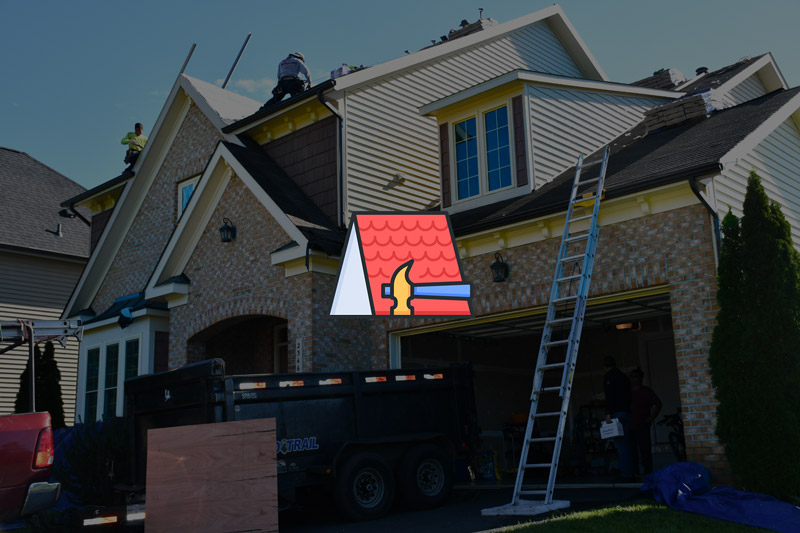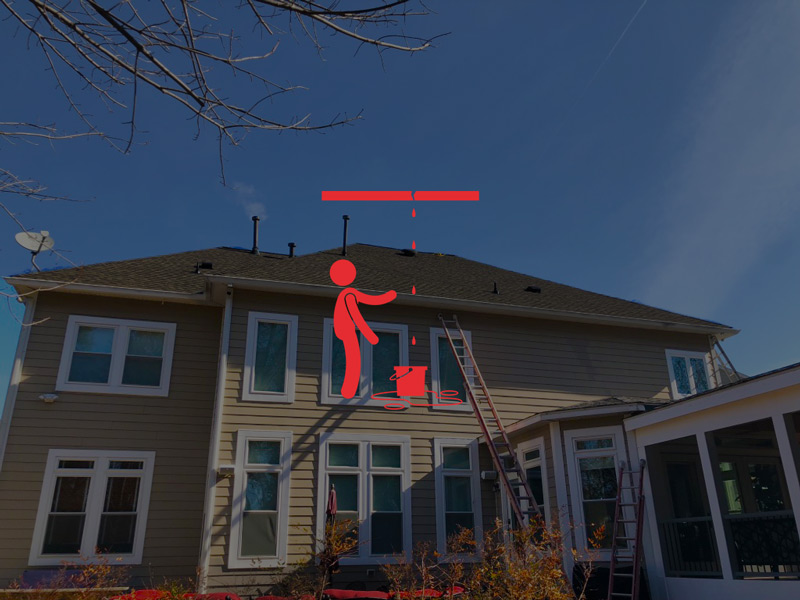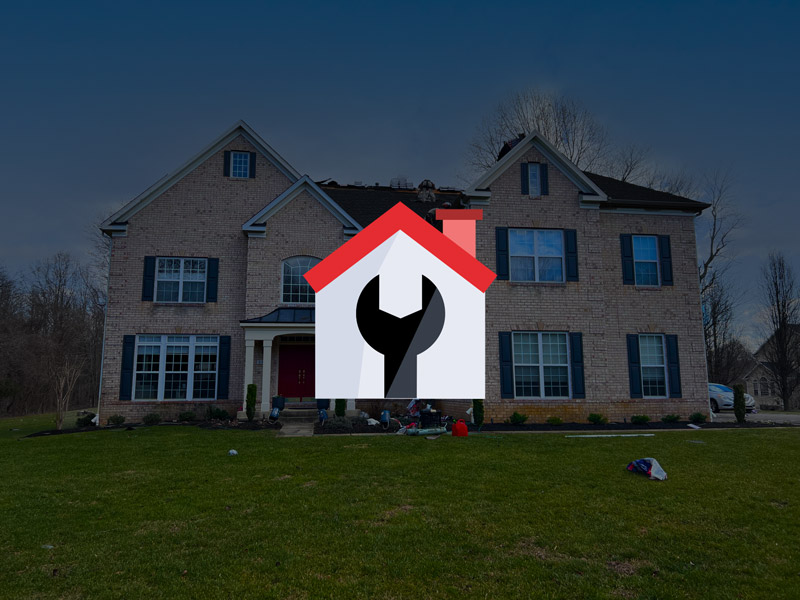Metal Chimney Leaks in Heavy Rain:Prevention and Repair
The chimney plays a crucial role in maintaining the safety and functionality of a home. It allows for proper ventilation of harmful gases and ensures the efficient operation of heating appliances. In heavy rain, metal chimneys can be susceptible to leaks, which can lead to extensive damage if left unaddressed.

Understanding Metal Chimney Construction
Introduction to Metal Chimneys
Metal chimneys are a popular choice for homeowners due to their durability and longevity. These chimneys are typically constructed using metals such as stainless steel, galvanized steel, or aluminum. They offer several advantages over traditional masonry chimneys, including lighter weight and ease of installation.
Benefits and Drawbacks of Metal Chimneys
Metal chimneys provide numerous benefits for homeowners. They are resistant to fire, pests, and weather damage, making them a reliable choice for long-term use. Additionally, metal chimneys are often more cost-effective compared to masonry chimneys, as they require less maintenance and repairs over time.
However, it is essential to consider some drawbacks as well. Metal chimneys may be more prone to expansion and contraction with temperature changes, which can lead to potential leaks. Moreover, the aesthetic appeal of metal chimneys may not match that of traditional brick chimneys, which could be a consideration for homeowners seeking a specific architectural style.
Common Types of Metal Used in Chimney Construction
Various metals are utilized in the construction of metal chimneys, each with its unique properties. Stainless steel is a popular choice due to its excellent resistance to corrosion and high heat tolerance. Galvanized steel, coated with a layer of zinc, provides enhanced protection against rust and is relatively cost-effective. Aluminum chimneys are lightweight and resistant to corrosion, but they may not be as durable as stainless steel or galvanized steel.
Importance of Proper Installation and Maintenance
Proper installation and ongoing maintenance play a vital role in ensuring the longevity and performance of metal chimneys. During installation, it is crucial to follow manufacturer guidelines and local building codes to ensure a secure and watertight connection to the roof. Regular inspections and maintenance, including checking for corrosion, inspecting flashing, and cleaning debris, are essential for preventing leaks and addressing potential issues promptly.

Causes of Metal Chimney Leaks in Heavy Rain
Corrosion and Rusting of Metal Chimneys
Factors Contributing to Corrosion
Metal chimneys are susceptible to corrosion due to exposure to moisture, chemicals, and environmental elements. Factors such as high humidity, acid rain, and proximity to coastal areas can accelerate the corrosion process. When metal chimney components corrode, they weaken, leading to potential leaks during heavy rain.
Impact of Heavy Rain on Corrosion
Heavy rain exacerbates the corrosion of metal chimneys by increasing moisture exposure. The constant presence of rainwater on the chimney’s surface creates a conducive environment for corrosion to occur. Over time, the continuous cycle of wetting and drying promotes rust formation and compromises the integrity of the chimney structure, resulting in leaks.
Improper Flashing and Sealant
Flashing acts as a protective barrier between the chimney and the roof, preventing water intrusion. When installed correctly, flashing redirects water away from vulnerable areas, such as joints and intersections. However, inadequate or improperly installed flashing can fail to provide sufficient protection, allowing water to penetrate the chimney system and cause leaks during heavy rain.
Common Issues with Flashing and Sealant
Flashing and sealant deterioration can occur over time, compromising their effectiveness in preventing leaks. Age, exposure to extreme weather conditions, and poor installation techniques contribute to flashing and sealant failure. Cracked or loose flashing, as well as degraded sealant around the chimney, create entry points for rainwater, leading to potential leaks.
Cracked Chimney Caps and Crowns
- Causes of Cracks
Cracks in chimney caps and crowns can develop due to various reasons, including age, freeze-thaw cycles, and structural movement. Additionally, poor construction or impact from falling debris can contribute to cracks. When these components develop cracks, heavy rain can worsen the situation by allowing water to penetrate the chimney system, resulting in leaks.
- Effects of Heavy Rain on Cracked Caps and Crowns
Heavy rain intensifies the impact of cracked chimney caps and crowns. Water can seep into the cracks, causing further deterioration and compromising the chimney’s ability to shed water effectively. This leads to increased leakage during heavy rain events, potentially damaging the interior structure and surrounding areas.

Prevention and Maintenance Tips
Regular Inspection and Maintenance
Regular inspections are crucial in identifying potential issues before they escalate. It is recommended to inspect the metal chimney at least twice a year, preferably during spring and fall. Additionally, it’s essential to perform inspections after severe weather events or heavy rain to assess any damage or leaks.
Key Areas to Check During Inspections
During inspections, pay close attention to the chimney cap, flashing, sealant, and chimney crown. Look for signs of corrosion, cracks, loose flashing, or deteriorated sealant. Inspect the chimney interior for water stains or dampness, indicating possible leaks. Addressing these issues promptly can prevent further damage and costly repairs.
Proper Flashing Installation
Proper flashing installation is critical for preventing metal chimney leaks in heavy rain. Engaging a professional roofing contractor ensures correct placement and secure attachment of the flashing. Professionals have the expertise to determine the appropriate flashing style, such as step flashing or continuous flashing, based on the chimney design.
Choosing the Right Flashing Material
When installing or replacing flashing, consider using corrosion-resistant materials like stainless steel or galvanized steel. These materials provide long-term durability and help prevent leaks. Consult with a roofing expert to determine the most suitable flashing material for your specific metal chimney.
Sealant and Waterproofing Considerations
Selecting the right sealant is crucial for effective waterproofing of metal chimneys. Polyurethane or silicone-based sealants are commonly used due to their flexibility and resistance to temperature fluctuations. These sealants create a durable and watertight seal around chimney joints and areas susceptible to water intrusion.
Application Techniques for Effective Waterproofing
When applying sealant, ensure the chimney surface is clean, dry, and free from debris. Apply the sealant evenly, covering any gaps or cracks that may allow water penetration. Pay attention to the flashing edges and chimney crown, as these areas are prone to leaks. Regularly inspect and reapply sealant as needed to maintain its effectiveness.

Repairing Metal Chimney Leaks
Identifying the Source of Leaks
To pinpoint the source of metal chimney leaks in heavy rain, conduct a thorough visual inspection. Look for signs of water stains, dampness, or discoloration on the chimney exterior and surrounding areas. Additionally, use moisture detection tools like moisture meters to identify hidden leaks behind walls or ceilings.
Common Areas Prone to Leaks
Leaks in metal chimneys often occur around the flashing, chimney cap, crown, or where the chimney meets the roofline. Examine these areas closely for any signs of damage, cracks, or gaps that may allow water penetration.
Temporary Fixes During Heavy Rain
In case of immediate leaks during heavy rain, temporary fixes can help minimize water intrusion. Apply a high-quality waterproof sealant around the suspected leak area, ensuring thorough coverage. Additionally, waterproof tapes can provide a temporary barrier against water ingress.
Limitations and When to Seek Professional Help
Temporary fixes should be considered a short-term solution. While they can provide temporary relief, they may not address the underlying issue causing the leaks. If the leaks persist or reoccur, it is advisable to seek professional assistance from a roofing contractor experienced in metal chimney repairs.
Long-Term Repair Options
To address cracks in the metal chimney, use appropriate patching materials designed for metal surfaces. Clean the affected area, apply the patching compound, and ensure a tight seal. Additionally, consider applying a weatherproof sealant to provide extra protection against water infiltration.
Replacing Damaged Flashing or Chimney Components
If the flashing or chimney components are severely damaged or beyond repair, replacement might be necessary. Engage a professional roofer to remove the old flashing and install new flashing, ensuring a proper fit and secure attachment. Properly installed and functioning components can effectively prevent future leaks.
View More Articles
Please Share!










